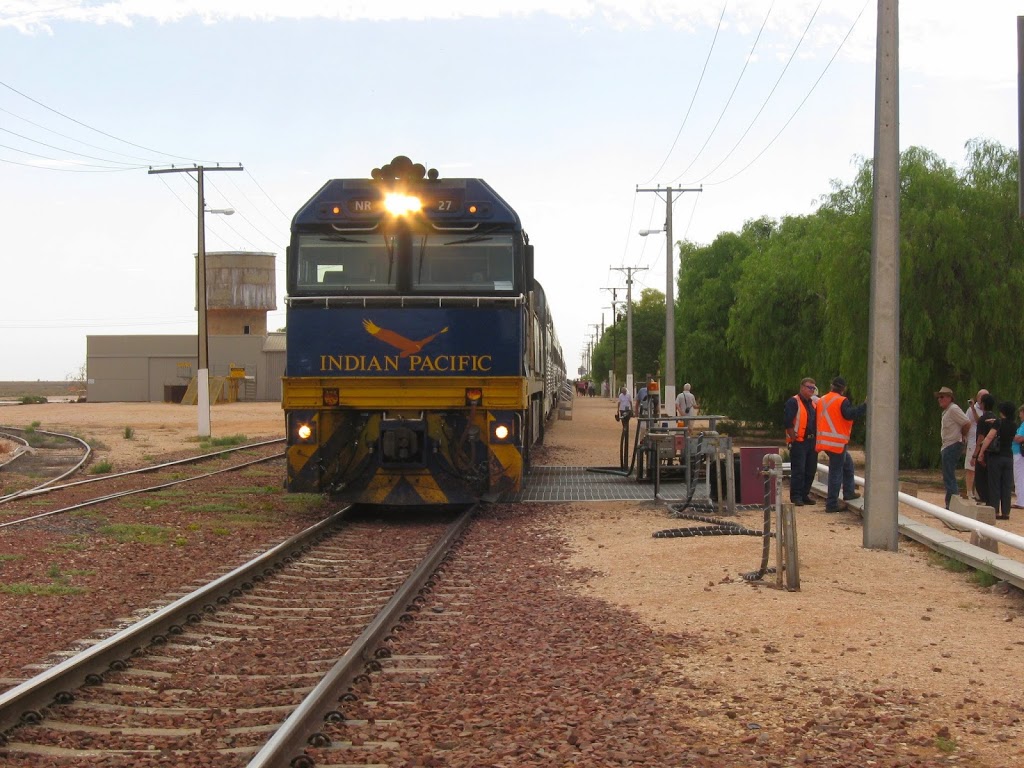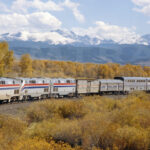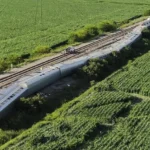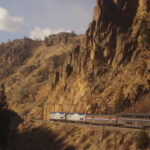Criss-Crossing Australia on the Indian Pacific and the Ghan.
(This is Part Two of the account of my rail journeys in 2009, bisecting the Australian continent, first east to west on the Indian Pacific, then north to south on the Ghan. This story originally appeared in the Dallas Morning News. Do I recommend either or both of these rides? Absolutely, mate!)
The sun is already up when I awaken. The Blue Mountains are well behind us now and we’re passing through low hills, the reddish soil dotted with gray-green brush and gum trees.
Our first stop of the day is at Broken Hill. Many of my fellow passengers take the hour-long bus tour of this mining town, while I opt for a brisk walk up and down the platform. It’s already quite warm and the temperature will pass 100 degrees well before noon.
Later, with everyone back on board and enjoying lunch, the Indian Pacific is rolling through wheat fields and lush pastures dotted with sheep. By mid-afternoon we reach Adelaide, the capital of South Australia – a comfortable city, with wide streets and spacious well-kept parks.
There’s a crew-change here and the new attendants and chefs and train managers pick up seamlessly: another excellent dinner served in two sittings with berths made up while we dine.
Just after breakfast on our second morning, the train eases to a stop at the town of Cook, well out onto the vast, desolate Nullarbor Plain, extending for hundreds of miles in every direction. A number of us take this opportunity to stroll up the the locomotive and chat a bit with the “drivers”, which is what the Aussies call the engineer.
This was originally a service stop for steam locomotives when the railroad was constructed in 1917, but since the advent of diesel power in the early 50s, the town’s population has shrunk and, on this particular day, stands at two … both middle-aged ladies busily selling trinkets to passengers packing a little souvenir shop. Their husbands are away, but will be returning next week when, one of the women says with a laugh, the town’s population will double.
Thirty minutes later, the Indian Pacific is again heading west, rocking along on the longest perfectly straight stretch of railroad track in the world – 302 miles. Outside, the Nullarbor is constantly if subtly changing: quite barren and desolate for a time then, an hour later, with rocks and boulders scattered beyond the horizon. Later still, trees appear – gnarled and scrawny, but with pompoms of bright green leaves at the tips of the branches.
Over lunch, I ask a garrulous farmer from the wine-growing region north of Sydney what constitutes “The Outback” here in Australia. “Well, mate,” he says, “I’d say the Outback is everything west of the east coast and everything east of the west coast.” And he guffaws loudly.






